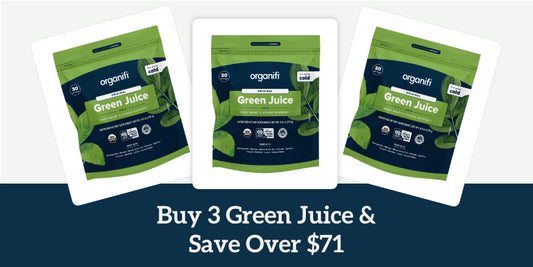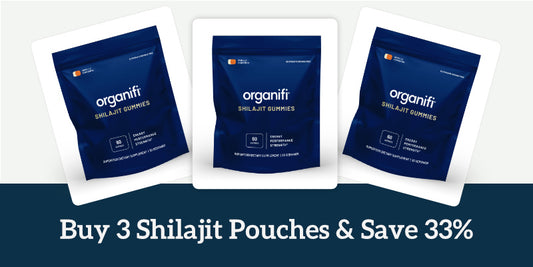If the eyes are the windows to the soul, the nails are the door to your overall health. Most of us glance down at our nails and think “I need a manicure” or “I should stop biting my nails” and then forget about it, only to start paying attention when there’s a more serious issue.
However, contrary to popular belief, our nails are usually healthier than we think:
Healthy nails are not just the product of a good manicure, but of good nutrition and overall health.
Whether you’re constantly getting nail art done, or hardly give your nails a second thought, it’s always good to know what healthy nails look like and what potential issues to watch out for whenever they are not, before it becomes pressing.
Brittle, dark, or curved nails may be signs of significant internal health issues.
The body is constantly speaking to us and nails just like skin and hair, can carry serious messages from internal organs that need attention, nutritional needs, and even our emotional state. Anything from poor diet to kidney damage to unhealthy liver function may cause nail damage (or nail trauma) in healthy nail beds.
What we eat, use and feel may show up in our nails.
When the body requires a specific nutrient, vitamin or mineral -or is having too much of them- it immediately sends out signals for course correction. This is also true for chemicals (hello gel nails!) and topical lotions we may be exposed to.
We put together a handy list of healthy nail symptoms and signs, and unhealthy ones, for you to reference back to whenever you feel something is off.
How are Healthy Nails Connected to Body Health?
Fingernails are part of the body’s integumentary system. That may be the first time (in a long time) that you hear about that. The integumentary system is formed by the skin, hair, nails, glands, and nerves that act as a barrier to protect you against infections, foreign bodies, and more.
The integumentary system protects the body against disease and helps regulate its functions.
In coordination with the nervous system, the immune system, the digestive tract, and the circulation system, the integumentary system:
- Protects internal living tissues and organs
- Guards against infectious organisms
- Shields the body from dehydration
- Secures the body during abrupt changes in temperature
- Supports body waste disposal
- Helps Stores water and fat
- Helps monitor outside sources through touch, pressure, pain, heat, and cold
This is why fingernails can provide such powerful insight into the body’s overall health, they are connected to everything and can quickly sound the alarm when an issue is starting to pop up.
How to Tell if You Have Healthy Nails
Nails are produced by living skin cells in the finger made out of mostly keratin, a hardened protein that is also available in the skin’s top layer and in hair. They grow from “the matrix” (and have nothing to do with Neo) where older cells are pushed out, compacted and hardened, eventually becoming the familiar flattened nail at the top of your finger.
Nails are comprised of:
- A Nail Plate: this is the visible part of the nail, that hardened top.
- The Nai Bed: the skin beneath the nail plate, healthy nail beds are visible through the top layer.
- The Cuticle: the tissue that that lies over the nail plate and around the base of the nail.
- The Nail Folds: the skin around the three sides of the nail that slightly fold over it.
- The Lunula: the light-colored or white half-moon at the base of the nail.
- The Matrix: the area hidden under the cuticle where the nail cells are produced and grow.
Signs of Healthy Nails:
- Pink or mauve color from healthy blood flow
- Turn momentarily white or light pink when pressure is applied, temporarily blocking blood flow in the area
- Are smooth or have small vertical ridges (horizontal ridges may be problematic, but vertical ones are normal)
- They do not break easily
- Flat nail fold; a swollen nail fold is usually a sign of inflammation due to trauma or other health problems
- Presence of cuticles to protect the nail matrix. Completely removing the cuticle, may hinder proper nail growth
- No dark lines or patches under your nail
Unhealthy Nails and What They Reveal About Your Health:
So now that you know what healthy nails look like, how they are formed and how they are connected to your health, let’s look at some common health issues and how they show up on your fingertips:
Brittle, Charked, Clear or Split Nails:
Usually a product of nail plate dryness caused by chemical exposure, fungus, or malnutrition. Nail polish remover, dishwasher, swimming in pools, cleaning supplies may lead to brittle clear nails.
Possible health problem: healthy nails bounce back easily from chemical exposure if your nails continue to break easily, be very dry, clear, or thin you may have hypothyroidism, psoriasis, or fungal infection. Talk to a doctor.
Clubbing or Clubbed Nails:
When the tips of the fingers are enlarged and curved, and the nails have curved around the fingertip over the course of years, the nail is considered clubbed.
Possible health problem: low oxygen in the blood, potential lung disease, inflammatory bowel disease, cardiovascular disease, and unhealthy liver function. Visit a dermatologist or doctor for a diagnosis.
Chewed Nails:
Beyond being an unpleasant sight, chewed nails tend to be a sign of emotional distress and can lead to infections, as the nail debilitates over time and fails the integumentary system.
Possible health problem: anxiety, stress, obsessive-compulsive disorder (OCD,) try relaxing, practicing meditation, and promoting nail growth with supplements, diet, and a coat of poor-tasting varnish.
Dark Stripes:
Black or dark discoloration of the nail may be a sign of blood trauma in healthy nail beds, allergies, or something worse. Seek immediate attention.
Possible health problem: allergic reactions, melanoma. Consult with your doctor immediately.
Horizontal Ridges or Beau’s Lines:
With the look of an indented line across the horizontal meridian of the nail, these horizontal ridges may be caused by direct nail trauma (from stubbing a toe) or from more serious health issues. They tend to occur when the body is too busy fighting an issue to make new nails.
Possible health problem: serious physical stress, severe malnourishment or nutrient deficiency, or after chemotherapy.
Pale Nails:
Nails can turn very pale when there are nutritional deficiencies, and they can usually be remedied with supplements, conscious eating, and consistent changes.
Possible health problem: malnutrition, iron deficiency anemia, liver disease, congestive heart failure.
Spoon Nails:
When the nail resembles a spoon with raised ridges and a scooped out depression.
Possible health problem: cardiovascular disease, iron deficiency or anemia, lupus, hypothyroidism, Raynaud's disease, hemochromatosis. Seek medical attention.
White Spots vs White Nails:
White nails with a dark rim under the outer nail growth may be a more serious sign of a health problem than white spots. While it is widely believed that white spots are connected to calcium levels, it isn’t typically the case and you’re likely just fine.
Possible health problem: unhealthy liver function (white nails.) If you see white spots, don’t worry. But, if you suddenly see all-white nails or white lines across, check with your doctor.
Yellow Nails:
Yellow nails are not always a sign of a health problem if you have your nails done often some nail polishes may turn healthy nail beds yellow
Possible health problem: fungal infection, thyroid issues, lung disease, diabetes or psoriasis. Talk to your doctor if the condition persists.
Tips to Keep Your Nails and Skin Healthy:
As you can see proper nail care is essential for our health, not just to monitor it, but to support it. Here are some easy tips you can use to rock healthy nails -and healthy skin- every day.
Healthy Nail Care
- Keep nails dry and clean
- Cut nails straight across with rounded edges on the sides.
- Do not bite or use as a tool!
- Trim regularly
- Do not “dig out” ingrown nails!
- Wear shoes that fit you well - they can turn your nails dark or brittle if too tight!
Foods
Look for foods rich in protein (keratin is a protein!), Biotin/Vitamin H, Vitamin A, collagen, Omega 3, and Zinc:
- Bananas, beans, lentils, cauliflower, eggs, peanuts, and salmon have Biotin in them.
- Eggs, flaxseed, spinach, fish oil, mackerel, and walnuts have Omega 3 fats.
- Lentils, lean meats, eggs, nuts, seafood, and soybeans, and quinoa are all sources of protein.
- Apricots, broccoli, carrots, mangoes, oatmeal, and spinach have Vitamin A -load up!
- Cashews, green beans, lean meats, and soybeans have Zinc
- Kiwi, carrots, berries, almonds, avocados (yay!), and dark leafy greens promote collagen production. You may find collagen in bone broth, and by slow cooking animal ligaments, cartilage, and bones.
Oils
Try natural and essential oils to nourish your nails and promote healthy growth, rub one to three drops on them once a week (or up to three) to prevent artificial coloring:
- Almond oil, rosehip oil, and rosemary oil help nourish healthy nail beds
- Essential oils: Myrrh, lemon, lavender, eucalyptus, carrot seed, and grapefruit
Supplements
Supplements can provide extra support for healthy nails, nail beds, and overall healthy skin:
- Biotin
- B-Vitamins
- Iron
- Complete Protein
- Omega 3
- Vitamin C
- Collagen support (now available on presale!)
- Zinc
Bottom Line:
Healthy nails are an outer expression of a healthy immune and integumentary system. Consuming a healthy diet rich in vitamins, minerals, and phytonutrients is the best way to support healthy nail beds and healthy skin. Include a wide variety of protein, fruits, vegetables, nuts and seeds to avoid malnutrition-related nail problems.
Supplement your healthy diet with oils, healthy nail care, and Organifi GLOW collagen support to ensure your body is in tip-top shape from inside out and head to toe (nails).




